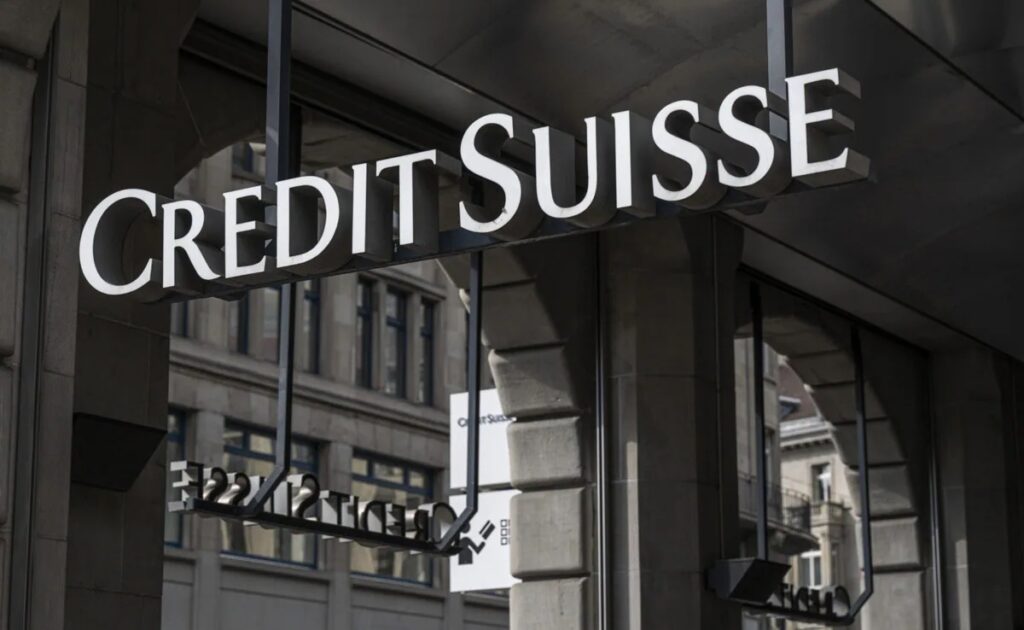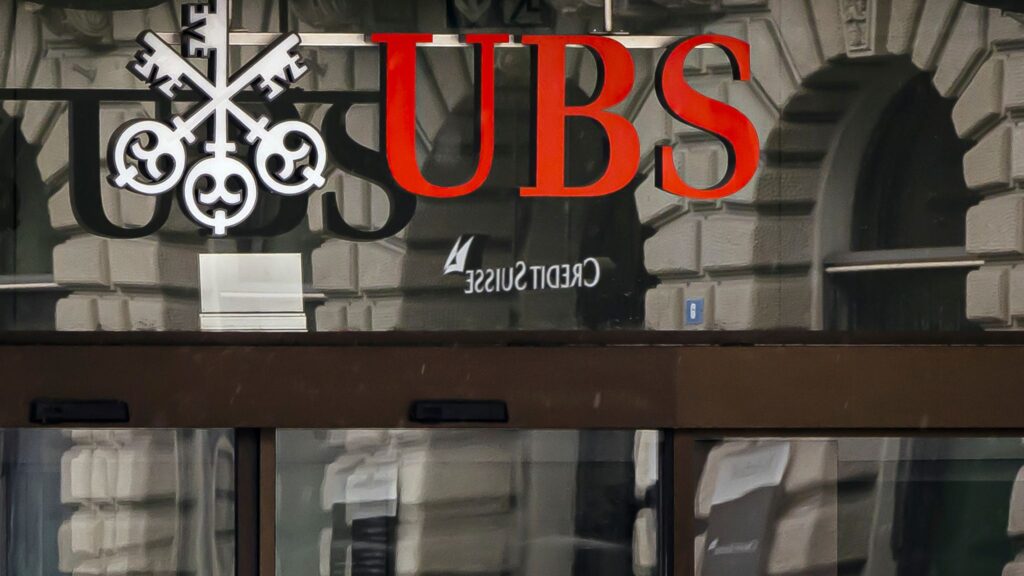UBS (NYSE: UBS) took over Credit Suisse (NYSE: CS) and thereby prevented a bank collapse. More, a bank collapse in one of the world’s top 30 systemically important banks. This stops another Lehman Brothers moment leading to the collapse of the financial system – and yet all other banks equities fell as a result, why?

The answer is that in saving CS the authorities did what was unexpected. Risk, the possibility of unexpected things happening, is something financial markets hate. So much so that markets demand more income for carrying risk. That’s just the way it goes, a riskier income is worth less as a capital sum. That’s why junk bonds pay higher interest coupons than Treasuries, because they’re higher risk.
Bank risk explained
As background we need to understand that a bank can go bust two different ways. One is that they lose all their capital, owe more than they have, they’re bust. This is what just happened to Silicon Valley Bank, also what happened to Lehman Brothers. But they can also go bust by being illiquid – this is where we get the mandatory reference to the bank run scene from It’s A Wonderful Life.
We can call our deposits out of the bank faster than the bank can call in its loans. So, if we all turn up on the same day and demand our money back then the bank is bust – it can’t pay everyone. This is what happened to Northern Rock for example. If the bank had time then it could pay – it doesn’t, so it is bust.
The solution to this has been known for a century and a half. The central bank should lend to banks that are illiquid, close those that are insolvent.
Was Credit Suisse actually insolvent?
OK, great. But Credit Suisse was looking like it might be illiquid but it wasn’t insolvent. So, the Swiss National Bank (the Swiss central bank) agreed to provide $51 billion of that necessary liquidity. Even in central banking, $51 billion is real money. That should have been enough, but it wasn’t.

This is where we get to what worries people about other banks. Because this should have been enough. This was a bazooka to get a fly – but it didn’t get the fly. People still kept taking their money out of CS. So, even with central bank help CS is still bust. Or will be – and we just can’t allow that. Credit Suisse was on the list of the top 30 banks in the world that we’re just not going to allow to go bust. So, it couldn’t. It had to be taken over. So, it was, by UBS.
UBS was the only bidder for Credit Suisse
But this then leads to two rather different problems which again make everyone nervous about bank stocks. The first is that clearly and obviously only UBS could possibly take over Credit Suisse. Even if you and I had $3.25 billion we wouldn’t be allowed to. When there’s only one buyer then the price is going to be pretty sh….well, not very large. That does make everyone nervous, of course.

The second is that everyone thought we’d solved this problem after 2008. All banks need to hold much more capital – the general idea is about twice what the banks held in 2008. CS did have this much. Also, there’s been some clever stuff done with bonds. We can call them AT1 bonds (because they count toward tier 1 capital, that safety the bank has against everyone wanting their money back at the same time, or against losses on loans) or “co cos” which stands for contingent convertibles.
The basic idea is simple enough. These are bonds which pay good interest rates – one issue from CS paid 9.75%. But if the bank gets into trouble (the contingence) then these are convertible (the conversion) into equity. Or, in the case of the CS bonds, they just disappear. The bonds are gone, the money is now capital, not debt, on the Credit Suisse balance sheet.
The thinking was that this would provide that layer of security meaning that no bank would ever go bust again. Huh, well that worked well. So, again nervousness, even though banks have much more capital, have those co co bonds, they can still go bust?
Priority in bankruptcy
But that’s not all. There’s a thing called priority. Who loses money first in a bankruptcy? And priority in bankruptcy is one of those things that underpins all financial markets. It runs, from first to last, secured creditors, unsecured creditors, equity shareholders. So, the guy with a mortgage on CS HQ (that’s what a mortgage really is, it’s the security on real property) gets paid first, the people with just general bonds second and if there’s anything left over then the equity gets their pennies – the shareholders.
But, you know, if the shareholders do get anything then the company wasn’t bust in the first place. That’s not the difficulty here though. The SNB (that Swiss central bank) allowed UBS to pay for the CS equity. Not a lot, it’s true, $3.25 billion. But the owners of the $17 billion in coco bonds? They got the shaft. They get not a penny. Which – according to the rules before last weekend – isn’t right. What was done is legal, but the Federal Reserve, Bank of England and European Central Bank are all running around shouting that they’d never allow that, no, never. But that the Swiss have just allowed it? Sure, that does make everyone real, real, nervous. After all, if you can’t trust Swiss banks with your money then who can you?
The standard terms in bank resolution (the polite term for clearing up bust banks) have changed. That’s uncertainty, markets hate uncertainty prices are therefore somewhere between weak and dodgy.
CoCo Bond ETFs took a hit
That CoCo bonds are a lot more vulnerable than we thought means that ETFs that hold CoCo bonds (say, Invesco AT1 Capital ETF, (LON: AT1P)) were looking pretty sick, perhaps 12% down. Which for a bond fund is very ill indeed.
Ah, but this is just about Swiss banks, right? And that’s all sorted and so we can all stop worrying? Except, well, no. We know that there’s a vast hole in the American banking system. A different problem to Credit Suisse but hey, when people get worried about banks, they get worried about banks. We do know this problem is there. It’s the one that killed Silicon Valley Bank. Losing all their capital.
Sorry, banking details matter
Again, details of banking. Banks can lend out their deposits (no, stop shouting about modern monetary theory and how banks don’t lend out deposits, really, just stop) and one of the ways they can do this is to buy bonds. It’s the same thing on a bank balance sheet, it’s money flowing out of the bank in the hope that someone will repay it, with interest, at some future date. OK. So, what do we know about bonds then? They fall in value when interest rates go up. Further, we know that the further away in time the repayment date then the more the value falls. All pretty obvious really, if we can get 5% a year for 30 years now then the old pieces of paper which would pay us 2% for 30 years are now worth less than the new ones. Shrug.
Which is how Silicon Valley Bank lost all its capital and then went bust. They had floods of money coming into the bank, they bought lots of bonds with it. Some Treasuries, a lot of mortgage bonds (yes, still guaranteed by the Federal Govt) and these are really, really, safe as to repayment risk. The government might waste the money but they’re good for repaying it. But they still carry price risk. Because interest rates can change.
Interest rate risk on bond values
SIVB also wanted to maximise the interest income from their bonds, which meant buying long tenors (a long time to repayment) which has the effect of maximising the losses when interest rates rise. Ooops. That really is it. Silicon Valley bought lots of long bonds and then interest rates rose. Ooops.
But this is banking so of course it is more complex than that. A bank is allowed to divide its reporting of its bonds into two classes. There’s “available to trade” and this is marked to market at each balance sheet date. So, any losses on it hit the profit and loss account and the balance sheet. We can see this. The other part of the book is “hold to maturity” and here the bank doesn’t have to report losses in the same way. It, well sort of, reports such losses on page 50 and more of the firm’s Form 10Q but it doesn’t cross the profit and loss, doesn’t reduce reported profits, and doesn’t change the capital that the bank needs to hold. You know, that extra capital that the bank should hold in order to stop the problems we had in 2008?
So, we’ve a system where a bank can lose all its capital without everyone quite realising this. Until everyone turns up to reclaim their money, those bonds must now be sold, the bank realises that it has, in fact, lost all its capital. Which is what did happen at SIVB.
Hold to maturity losses
And one more step. These hold to maturity (HTM) losses. We’re really pretty sure that there’s at least $300 billion of them in the American banking system. Some are trying to say that there’s $2 trillion of them. So, some to many American banks might be bust. Not illiquid, but insolvent if they do become illiquid. We also don’t know which ones they are.
Bank shares are down because bank shares are now more risky
So, Credit Suisse and co cos has shown that what we thought we knew about how bank insolvencies would be handled isn’t how it will actually work out in practice. Even with vast, $51 billion, central bank support a major bank can still go bust. A senior regional (or mid-level global) bank just went bust on hold to maturity losses. We think there are $300 billion to $2 trillion of such HTM losses floating around the banking system.
Bank share and stock prices are looking a little green around the gills right now. How surprised do you want to be?